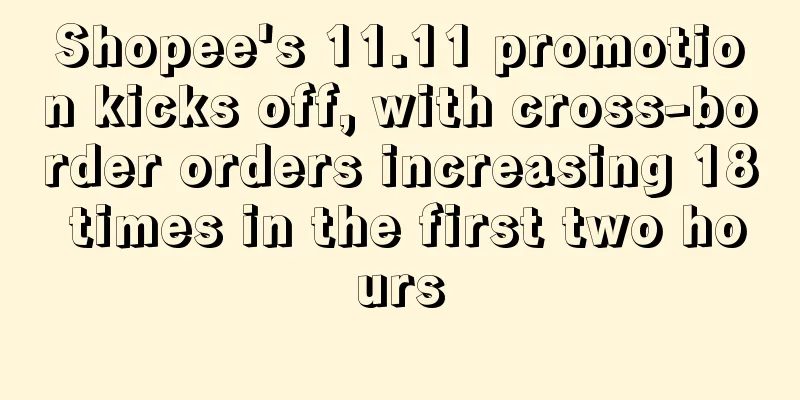What is Distribution? Distribution Review, Features

|
Distribution means uploading products in large quantities through the platform. For novice sellers who have unclear positioning, do not know how to select products, and are eager to place orders, distribution is the first choice for novice sellers to promote their stores.
About distribution Amazon distribution refers to Amazon sellers uploading products in large quantities on the Amazon platform. Amazon distribution is one of the common ways for sellers to promote and operate their stores. A seller is only allowed to publish the same product once on the platform, and a seller is not allowed to publish the same product through multiple accounts separately or simultaneously, otherwise it will be considered as duplicate distribution.
General Standards Duplicate product distribution includes but is not limited to the same main product image, similar title and attributes, or different main product images (such as the main image is the same product taken from different angles, etc.), but the title, attributes, and price are highly similar.
Specific details In addition to the general standards mentioned above, if different packaging methods need to be set for certain products, the number of releases must not exceed three, otherwise it will be regarded as duplicate distribution; the same seller, that is, an account under the same corporate certification or an account actually controlled on the AliExpress website, or the same IP and the same company certification, is only allowed to publish one online product for each product, otherwise it will be regarded as duplicate distribution.
Workaround 1. Image classification method Sellers can take photos of products from multiple angles and with different backgrounds. In addition, they can distinguish them based on whether there are models on display or different application scenarios of the product main picture. 2. Price differentiation method For the same product, sellers can compare the price settings of the same product in other sellers' stores and reasonably adjust their own price range. Specializing in marketing techniques based on consumer psychology, stores with higher prices will have lower transaction volumes, while stores with lower prices will have relatively higher transaction volumes. 3. Attribute differentiation method Sellers can explore different selling points for the same product. For example, for the same T-shirt, selling points can be explored from the fabric, color, and pattern. The description on the detail page should be differentiated in terms of text expression and picture arrangement. The same applies to store decoration style and size chart analysis.
Penalties Once duplicate products are detected on the Amazon platform, the products will be removed from the shelves at the least, and the store will be closed at the worst. It is best that the similarity between products in two stores does not exceed 30%, otherwise there will be a risk of association. Once the Wish platform considers that the products are duplicated, the relevant products will be deleted directly. If the duplicated products are serious, there may be a risk of account suspension. For duplicate products, the AliExpress platform will place them at the bottom of the search rankings and record the products in the total number of search cheating illegal products. When the number of search cheating illegal products in a store reaches a certain amount, the entire store will be given different degrees of search ranking decline. In serious cases, the store will be blocked. In particularly serious cases, the account will be frozen or directly closed.
Advantages 1. Operators do not need to have strong operational skills, which greatly saves labor costs. 2. There is no need to stock a large amount of inventory for a single product, which greatly reduces the risk of stocking and the problem of unsalable inventory caused by poor product development. 3. “Distribution” helps products to be launched quickly. 4. It is conducive to establishing stable sales outlets. 5. It is conducive to creating a linkage situation of "one point driving the front line, and the front line driving the side".
Amazon distribution method 1. Blind distribution of goods Without any plan or goal, they just upload whatever resources they have, test the market, and quickly get orders for individual products, so that sales can grow rapidly in the short term. However, this method is only suitable for the imbalance of supply and demand in the platform market, where the number of goods demanded by buyers far exceeds the number of goods provided by sellers, and vice versa. 2. Popular and best-selling products Sellers mainly follow the hot-selling products, taking the platform's hot-selling products as the standard, and upload whatever products are ranked high and have a large number of orders. This method is less risky than "blind distribution", but it also has certain limitations. It is often only suitable for sellers with a large number of products, a certain competitiveness of the platform, and not enough traffic to test each uploaded product. When uploading products, sellers choose products with potential, market, and selling points, so as to cultivate hot-selling products that meet market demand. Otherwise, it will have the opposite effect.
Amazon distribution skills 1. Product selection: Don’t be a grocery store without style and positioning. High-quality products, moderate prices, specialized categories, and careful product selection can make the store’s distribution and promotion half successful. 2. Pay attention to product image optimization: Don’t underestimate images. You may think that you can just take a few photos to meet Amazon’s requirements and upload them for use. But if you really do it carefully, according to relevant data, the clarity of the pictures can help you increase sales by 15%-20%, so pictures should never be ignored. But remember not to exaggerate, write product descriptions based on actual conditions, and the uploaded pictures must be consistent with the shipped products. 3. Product selling point: What is the most important thing for sales? Product selling point. Without selling point, there is no market. Therefore, highlighting product selling point is the top priority of promotion. When making products, you must consider clearly what is the biggest advantage of your product in the market and what is the difference between you and other products? This point must be made clear. 4. Customer reviews: Offline customers are king, and this is even more true online. Good customer reviews will continuously improve your listing rankings. The higher the ranking, the more traffic and orders you can get.
The difference between wholesale and boutique The difference between mass merchandising and high-quality products is just a matter of emphasis. At present, high-quality products focus on product selection and marketing. Because if you don’t send FBA, do fake orders, or advertise, you can’t make a high-quality product. Mass merchandising means giving up these and focusing on mass merchandising. However, when the distribution model is in the later stage, it will return to the boutique model. After all, it is impossible not to spend energy to take care of products with a lot of orders. Therefore, it is impossible to say that a company has only one model: the distribution model or the boutique model. It can only be said that the company's basic operation line will only be set on one. After all, in some categories, it is difficult to stand out among strong competitors simply by making boutique products, such as the clothing category.
Myth Many people have a misunderstanding that spreading goods is just spreading products. In fact, spreading goods is a way of operation that has been passed down from the earliest cross-border business people to the present day, with multiple accounts, multiple products, and multiple personnel. In other words, if you take the road of spreading goods, you will inevitably spread products, spread stores, and even spread platforms. For example, Lens Technology, the five tigers of Bantian, is also a representative of the massive distribution and multiple SKUs on the wish platform, but it is also constantly expanding the Amazon market.
Distribution risk Although large-scale distribution can get more exposure opportunities for new products, the more distribution, the more distracted the energy is, and the less energy is left to control the risk of infringement and product compliance, which will lead to a sharp increase in uncontrolled product risks. Over time, it will pose a threat to accounts, inventory, and funds, turning into a time bomb that can explode at any time. What’s even more frightening is that there are more than one time bombs generated by the distribution of goods. When more of them explode, it will directly endanger the entire layout. But for big sellers, this is not a big problem. Because big sellers only need to set up a product review based on existing personnel and processes. This also confirms the aforementioned fact that distribution of goods requires capital. In addition to product risks, there are also store risks brought about by performance audits and policy changes. However, such risks must be faced regardless of whether the distribution model or the boutique model is adopted. On the contrary, spreading stores can effectively control risks.
develop When a platform is just launched, or when buyer demand greatly exceeds the number of products provided by sellers, "spreading goods" is very effective. For example, AliExpress was able to spread goods in large quantities across multiple stores from 2010 to 2015, Wish was also able to spread goods in large quantities from 2013 to the first half of 2016, including now, eBay was also able to do so from 2008 to before 2013, Amazon was able to do so before 2016, and Lazada in 2015, Shopee in 2016, and so on. However, when the platform traffic is stable, the number of buyers remains stable, and sellers continue to enter, causing intensified competition, especially when everyone uses ERP to distribute goods, resulting in a large increase in the number of goods on the platform, "distribution" enters the second stage, progressing from "blind distribution" to "for popular and hot-selling products." |
<<: What is OLX? OLX Review, Features
>>: What is Wallapop? Wallapop Review, Features
Recommend
What is Lebao Logistics? Lebao Logistics Review, Features
Shenzhen RUSHBOX Co., Ltd. (RUSHBOX) ("RUSHB...
What is Pexda? Pexda Review, Features
Pexda is a reliable direct sales tool and a well-...
A cross-border e-commerce training company was fined 600,000 yuan for alleged false advertising
Recently, the market supervision department of Ch...
European e-commerce grows rapidly in many categories, with the UK maintaining its leading position
Recently, ystats.com conducted a survey and summa...
It is said that Anker has entered a new track, and Xiaomi’s former technical director is in charge
"Hello, your meal has been delivered, please...
What is ConcordBank? ConcordBank Review, Features
ConcordBank is the first bank to issue currency o...
Outrageous! Amazon online celebrity sellers were infringed by their peers by "changing faces"
In the course of business, sellers have more or l...
What is Barclays Bank? Barclays Bank Review, Features
Founded in 1690, Barclays Bank is a universal ban...
What is agathare? agathare Review, Features
Agathare is a professional manufacturer of 502 glu...
What is Zhigu Supply Chain? Zhigu Supply Chain Review, Features
Intel-valley Supply Chain (Intel-valley Supply Cha...
Another country's consumers fall in love with Temu
Since its launch in March last year , Temu has be...
What is eClincher? eClincher Review, Features
In addition to setting up scheduled sending, this...
What is Vtrina? Vtrina Review, Features
Vtrina is a company dedicated to providing soluti...
eBay launches special event for women's sports shoes, targeting the $80 billion market
Foreign media reported that with the Internationa...
Second-hand market booming? 66% of Americans are willing to accept second-hand gifts
Affected by rising prices, increasing shortages a...









